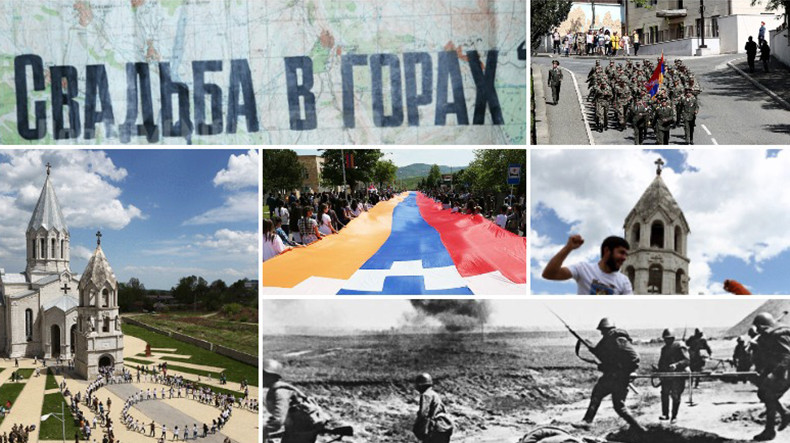
Armenia celebrates May triple holiday
May 9 marks the Victory Holiday, the 28th anniversary of the Nagorno Karabakh Republic Defense Army and the Liberation of Shushi. The day has traditionally been celebrated by festive events and military parades in Armenia and Artsakh, yet most of the large scale celebrations have been restricted this year due to the coronavirus pandemic.
The Liberation of Shushi was organized and directed by the Armenian talented commanders and the heroes of liberation struggle led by legendary general Arkady Ter-Tadevosyan (Commandos), Commander of the self-defense forces of Artsakh in 1992. The implementation of the heroic step was carried out by the commanders of the 4 fronts who put the glorious end to the military operation named “Wedding in the Mountains”, and at dawn of May 9 entered Shushi, with Arkady Ter-Tadevosyan declaring all adversary units had abandoned Shush and the town is liberated.
The victory at Shushi had a crucial importance in the Karabakh war first to end the relentless bombing of the capital city Stepanakert and the suffering of its population, living in the conditions of the total blockade. The imperative was to silence the Azerbaijani intensive and constant shelling, break the imposed blockade and save the starving the city population from annihilation.
On 9 May Armenia celebrates not only the liberation of Shushi and the establishment of the Artsakh army, but also the 75th anniversary of the Soviet Union's victory over Nazi Germany (Victory and Peace Day) in the Great Patriotic War of 1941-1945.
The war was a crucial part of World War II (1939-1945). It began on June 22, 1941, when Germany launched an attack on the Soviet Union in violation of all prevailing treaties.
The Great Patriotic War lasted nearly four years and was the largest armed confrontation in history. Between 8 million and 13 million people simultaneously fought in different periods of the war over an area that stretched from the Barents Sea in the north to the Black Sea in the south. The confronting armies had between 6,000 and 20,000 tanks and assault guns, between 85,000 and 165,000 pieces of artillery and mortars, and between 7,000 and 19,000 aircraft.
As a Soviet republic, Armenia made a great contribution to the victory over fascism during the war. Altogether, it is estimated that around 500,000 Armenians fought for the army of the Soviet Union, of whom 300,000 were from Soviet Armenia and the rest from other Soviet republics.
Some 200,000 Armenians fell heroically on the battlefield. About 70,000 Armenian soldiers were awarded with military orders and medals for their bravery and service during the war.
103 Armenians were awarded with the title Hero of the Soviet Union, taking the 6th place after Russians, Ukrainians, Belarussians, Tartars and Jews. Marshal Hovhannes Baghramyan and legendary pilot Nelson Stepanyan won the hero’s title twice.
Armenians gave 64 generals to the Great Patriotic War, one aviation marshal, one admiral. After the war, another 83 Armenian officers participating in the military operations got the rank of the general.
Newsfeed
Videos






























